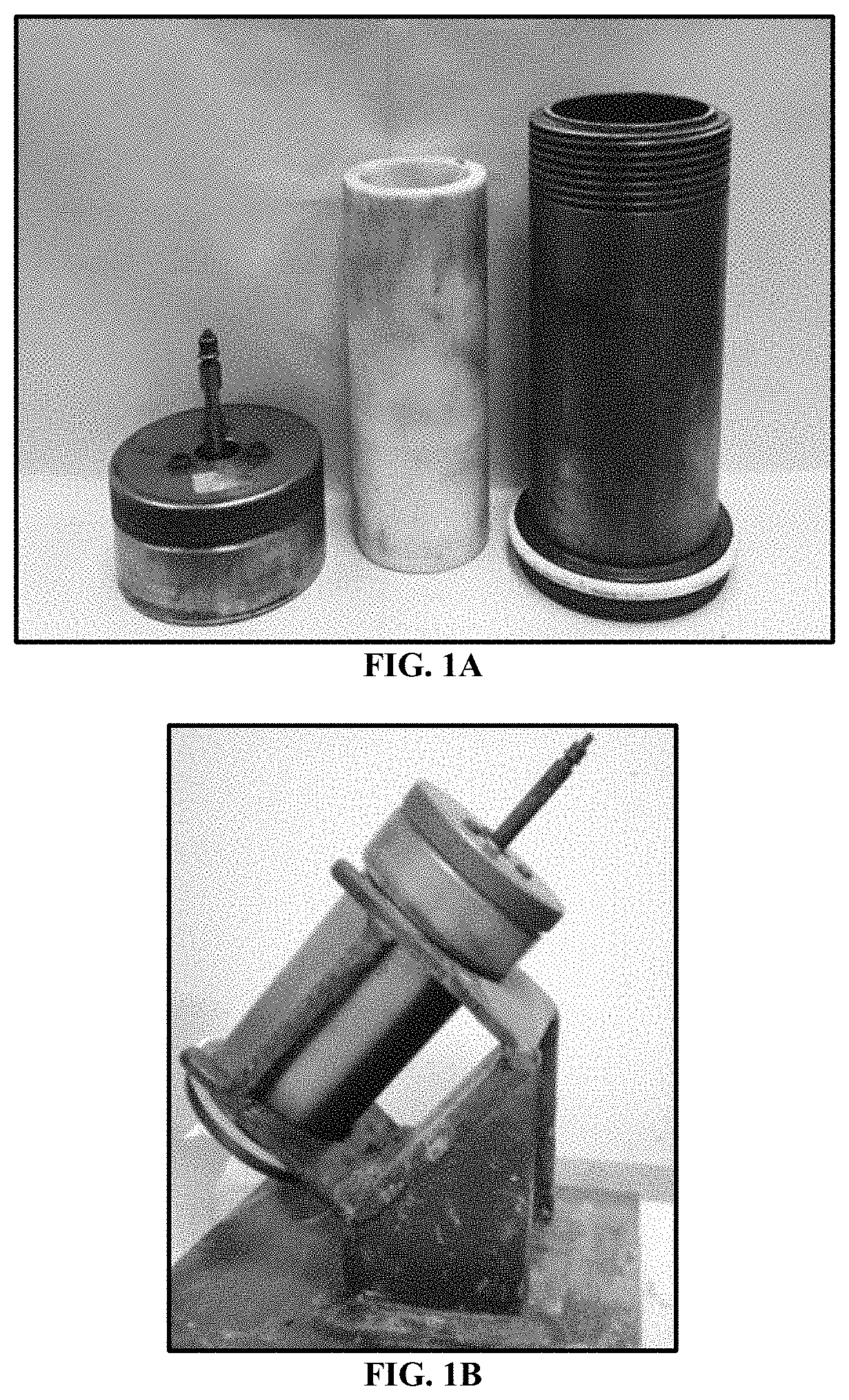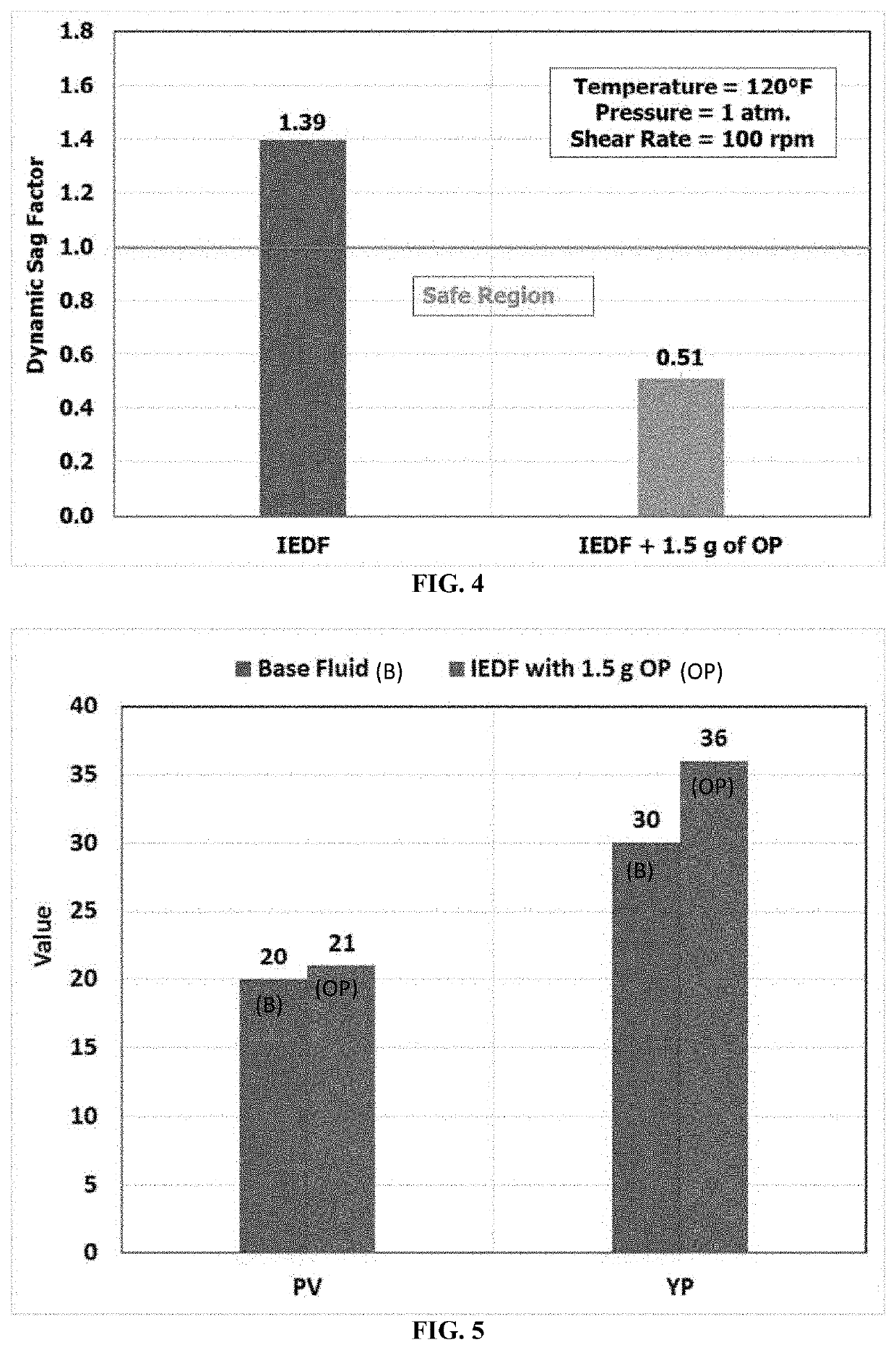Weighted drilling fluid containing organophilic phyllosilicate
- Summary
- Abstract
- Description
- Claims
- Application Information
AI Technical Summary
Benefits of technology
Problems solved by technology
Method used
Image
Examples
example 1
Materials
[0123]The invert emulsion drilling fluid (IEDF) contained diesel as a continuous or external phase and water as dispersed or internal phase. The diesel to water ratio was 80 / 20. A primary emulsifier (INVERMUL®, available from Halliburton, 11 g) was used to form a stable emulsion. Lime (6 g) was used for removing any contaminates. A fluid loss control agent (Duratone® II, available from Halliburton, 7 g) was used to reduce and prevent the filtration. Calcium chloride (32 g) was used for shale stabilization. A viscosifier (Geltone® II, available from Halliburton, 10 g) was used to increase the viscosity of the IEDF. A secondary emulsifier (EZ-Mul®, available from Halliburton, 4 g) was used to enhance the emulsion stability. Calcium carbonate (30 g) was added as a bridging material and barite was used as a weighting material (300 g). Table 1 lists the drilling fluid additives that were included to prepare the IEDF.
TABLE 1Invert emulsion drilling fluid formulationfor lab prepar...
example 2
Drilling Fluid Preparation
[0125]The IEDF was prepared and mixed at ambient conations using a high speed mixer. Diesel was put in the cub first and different additives were added sequentially at high speed mixing. Each additive was mixed for at least 10 minutes to ensure good distribution of the additive in the IEDF and to allow the additive to build its own property. The new anti-sagging additive (OP) was added before the calcium carbonate and mixed for 10 minutes. Different drilling fluid formulations were prepared with different amounts (e.g. 0, 0.5, 1.0, 1.5, and 2.0 g) of OP additive.
example 3
Sag Tests
[0126]Static sag tests were performed to investigate the impact of the new anti-sagging additive on barite sag tendency. The drilling fluid sample was mixed for 10 minutes before being poured into the aging cell. The cell was pressurized with 500 psi using nitrogen gas then heated in the oven at specific temperature and static conditions for 24 hours. After 24 hours, the cell was cooled down and depressurized. Then, syringes were used to take fluids from the top and the bottom of the drilling fluid sample to evaluate the density. Then, the sag factor was calculated for all drilling fluid samples using Eq. 1. Sag test was conducted at vertical and inclined (45 degree) conditions.
[0127]Alabdullatif et al. and Maxey suggested that a sag factor in the range of 0.5-0.53 was acceptable, while a sag factor higher than 0.53 indicated solids settlement [Alabdullatif, Z., Al-yami, A., Wagle, V., Bubshait, A., Al-safran, A., 2015. Development of New Kill Fluids with Minimum Sagging Pr...
PUM
 Login to View More
Login to View More Abstract
Description
Claims
Application Information
 Login to View More
Login to View More - R&D
- Intellectual Property
- Life Sciences
- Materials
- Tech Scout
- Unparalleled Data Quality
- Higher Quality Content
- 60% Fewer Hallucinations
Browse by: Latest US Patents, China's latest patents, Technical Efficacy Thesaurus, Application Domain, Technology Topic, Popular Technical Reports.
© 2025 PatSnap. All rights reserved.Legal|Privacy policy|Modern Slavery Act Transparency Statement|Sitemap|About US| Contact US: help@patsnap.com



